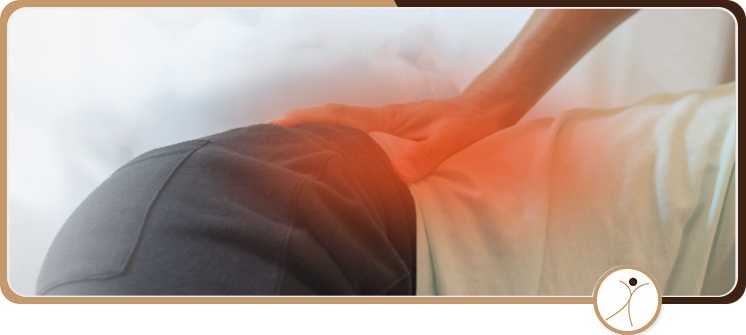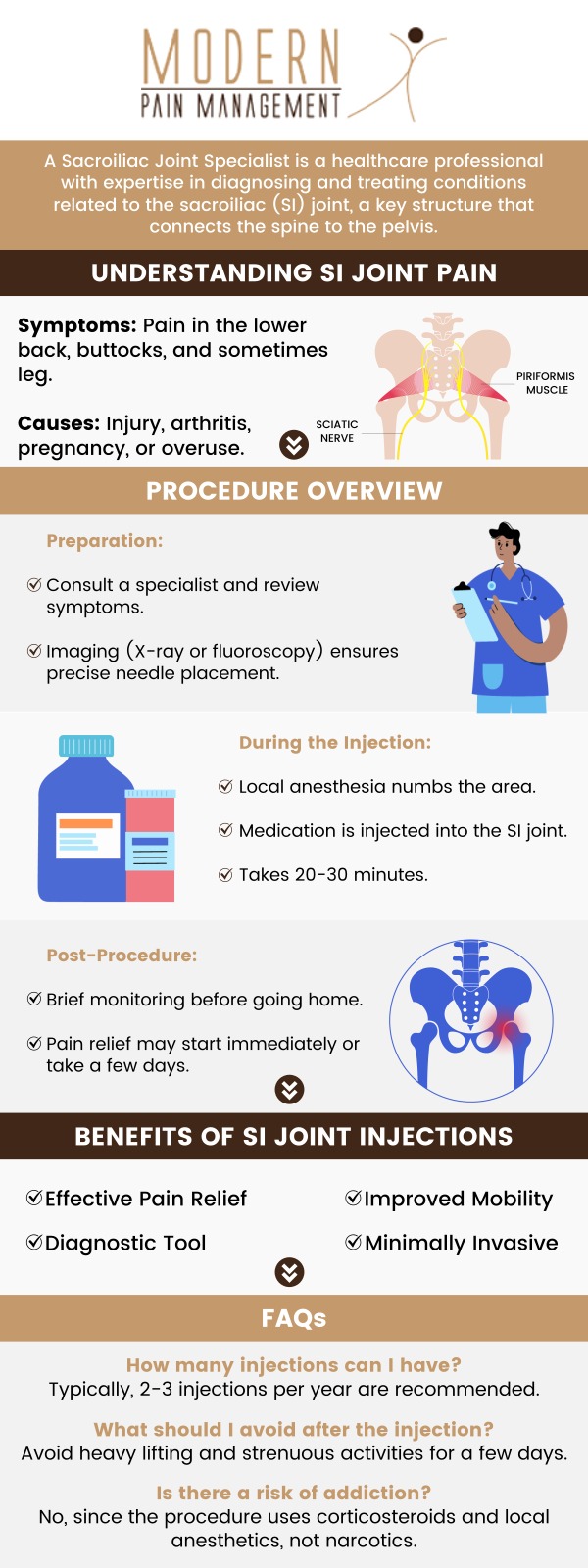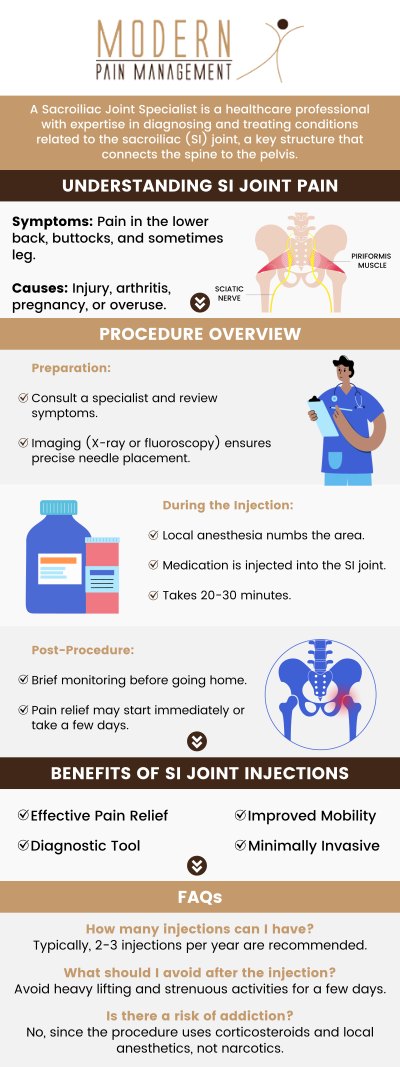Where Is SI Joint Pain Felt and How to Recognize it Q&A
Welcome to our specialized clinic dedicated to relieving sacroiliac (SI) joint pain through innovative techniques and personalized care. Our facility prioritizes your well-being with advanced treatments designed to restore mobility and enhance your quality of life. Discover effective solutions and compassionate support for SI joint pain at our clinic with Dr. George Atallah, D.O., and his committed team. For more information, please contact us or book an appointment online. We have convenient locations to serve you in Houston, TX, and Sugar Land, TX.




Table of Contents:
Where do you feel pain from a SI joint?
What is the one-finger test for sacroiliac pain?
What can mimic sacroiliac joint pain?
How do you diagnose sacroiliac joint pain?
Sacroiliitis is a condition that affects one or both sacroiliac (SI) joints and can be profoundly painful. Patients affected by SI pain commonly report discomfort and stiffness around the lower back or buttocks. In addition, some patients experience the sensation of pain traveling down one or both legs. For some, SI pain manifests in the groin or even the feet.
SI pain can be persistent or come and go intermittently. In most cases, the discomfort improves with movement. On the other hand, certain things can worsen SI pain, such as:
• Standing for prolonged periods.
• Climbing stairs.
• Sleeping or sitting down.
• Bearing extra weight on one leg compared to the other.
• Running.
• Taking large steps while walking.
If you notice discomfort that fits the description of sacroiliac pain, you are urged to speak with a pain management doctor to determine how to address your concerns successfully.
Healthcare professionals use a diagnostic assessment known as the Fortin finger test to identify SI joint pain. The process for performing this test is straightforward:
• The patient will be asked to use their finger to point out an area on their body where they feel the majority of their pain.
• The healthcare professional will take note of the specific location and instruct the patient to relax.
• After five to ten minutes, the doctor will ask the patient to repeat the first step of the process.
A Fortin finger test is considered positive if a patient can consistently pinpoint their most painful spot within one centimeter of the posterior superior iliac spine on two separate occasions. A positive Fortin finger test strongly indicates that the patient is affected by an SI joint condition.
Diagnosing SI joint pain accurately can be challenging due to its overlapping symptoms with other conditions. For example, conditions like lower back strain, facet syndrome, sciatica, disc herniation, and radiculopathy are often mistaken for SI joint dysfunction. Because these conditions share similar symptoms with SI joint dysfunction, such as lower back pain, radiating discomfort, and stiffness, pain management doctors take a comprehensive approach to establish an accurate diagnosis.
Doctors use a variety of diagnostic tools and evaluations to assess your symptoms and determine whether SI pain is the root cause of your discomfort. These tools include:
• Medical history review – To begin, the doctor will thoroughly discuss your symptoms, including where you feel pain, when it started, how severe it is, and what activities may alleviate or aggravate it. Additionally, they will explore any past injuries or medical conditions that could contribute to your SI joint discomfort.
• Physical examination – The healthcare professional will gently palpate around the SI joint to locate areas of tenderness. In addition, they may use the Fortin finger test to assess whether it’s likely that your symptoms are linked to SI joint dysfunction.
• Numbing shots – During this procedure, a local anesthetic is precisely injected into the SI joint using fluoroscopy for precise placement. If the injection substantially relieves the patient’s pain, it strongly indicates that the SI joint is the origin of the discomfort.
• Imaging tests – X-rays can help identify any abnormalities in the bones, such as arthritis or fractures, that may affect the SI joint. In addition, an MRI may be used to identify whether there is damage to the SI joint as a result of ankylosing spondylitis.
Your healthcare provider may also perform additional diagnostic testing to rule out the presence of other conditions that present similar symptoms. They may observe your gait to identify abnormalities as well as evaluate your posture for signs of misalignment. To receive an accurate diagnosis of what’s causing pain in your lower back or buttocks, schedule a visit with the dedicated team at Modern Pain Management.
Experience compassionate care and effective solutions tailored to your SI joint pain at our clinic. Schedule your consultation today and take the first step towards a pain-free life. Join countless others who have regained mobility and improved their quality of life with our expert guidance and support. For more information, please contact us or book an appointment online. We have convenient locations to serve you in Houston TX and Sugar Land TX. We serve patients from Houston TX, Sugar Land TX, Pearland TX, Jersey Village TX, Missouri City TX, Stafford TX, and Richmond TX.
ADDITIONAL SERVICES YOU MAY NEED




